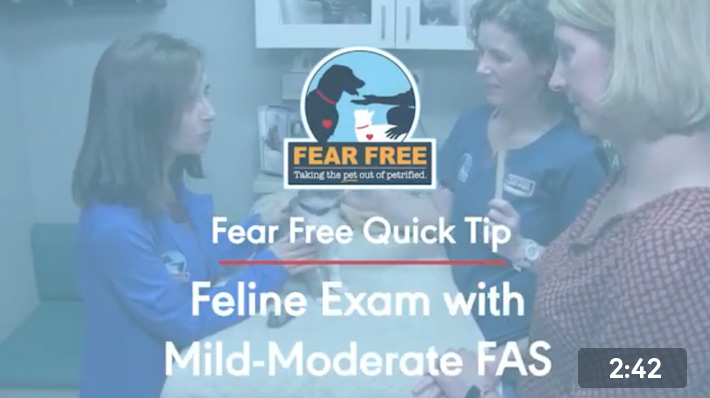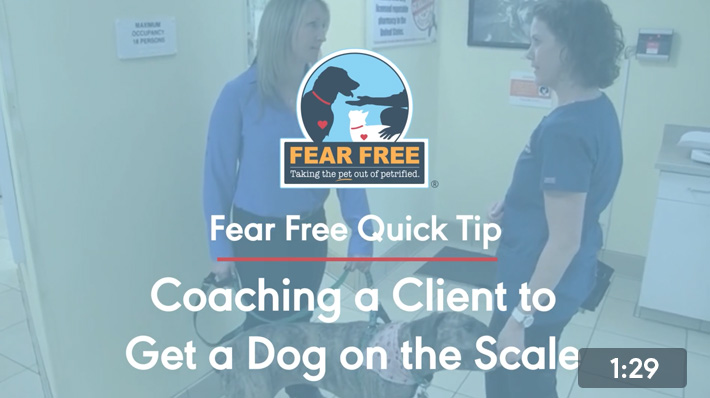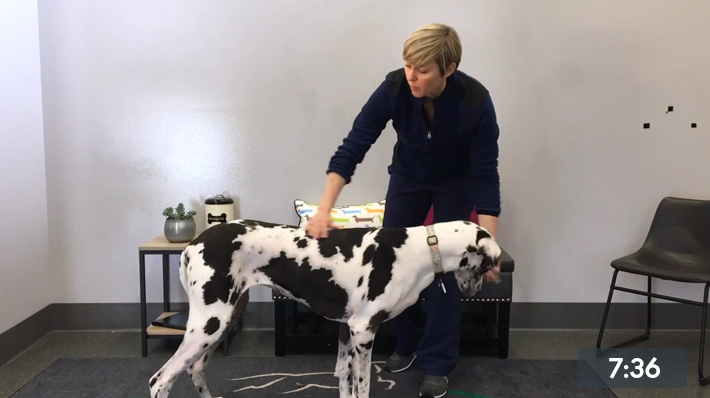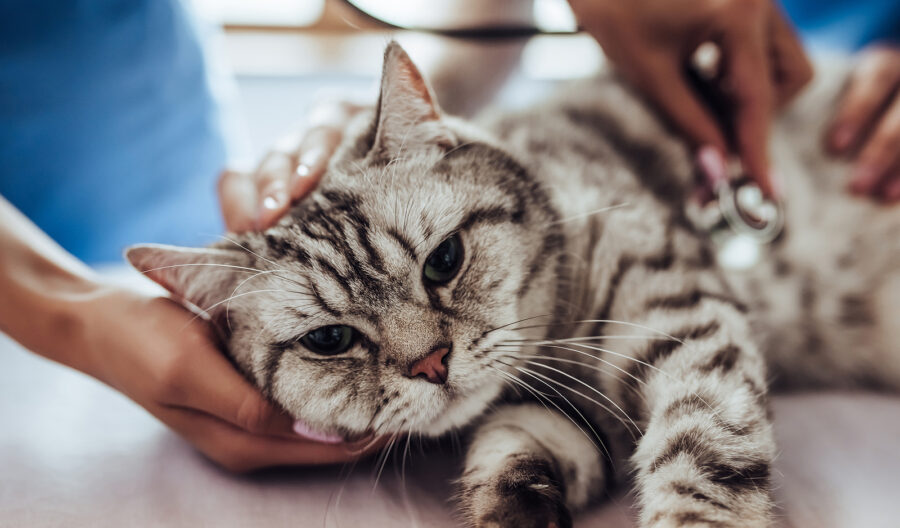
As the final piece of our pain management series, our experts each take a moment to let us know their most important pieces of information and expertise that they hope every veterinary professional can take to heart.

As the final piece of our pain management series, our experts each take a moment to let us know their most important pieces of information and expertise that they hope every veterinary professional can take to heart.

The management of patient pain can often fail when the onus is put onto the owner to properly medicate their pet. Our experts discuss best practices on managing pain at home with clients, particularly with feline patients who can often be difficult to manage. There is also a discussion of what acute pain does to the body of our patients.

One of the most overlooked tenets of Fear Free is the hospital environment and how it can affect your patients’ fear, anxiety, and stress. Our roundtable of experts discuss how you can create a welcoming environment for your patients, clients, and team members.

The roundtable of experts discuss how the implementation of Fear Free in hospitals can help reduce the stress of all members of the veterinary team and owners—and thus the FAS of the clients and patients. There is also a discussion on how to handle referral clients, especially those who may not be able to come back for repeated visits and how putting yourself in the place of the animal can help you to understand how to manage the hospital environment for them.

Blood draws are an essential part of practicing veterinary medicine, but they can be stressful for the professional, let alone the patient. Veterinary nurse/animal trainer Laura Ryder, CPDT-KA, KPA-CTP, shows you how you can get a canine blood draw done the Fear Free way.

Join a star-studded roundtable of Fear Free experts discussing the interaction of pain and fear, how the variability between specific patients and species can affect pain, and how management of fear can help to alleviate pain.

You must be a Fear Free member to access this content.
Lisa Radosta, DVM, DACVB, shows how to examine a feline patient who is exhibiting mild to moderate FAS in a safe and controlled manner.

Debbie Martin, RVT, CPDT-KA, KPA CTP, VTS (Behavior), demonstrates how you can help coach your clients to get their dogs on the scale easily and without stress.

[wcm_restrict plans=”level-1-group-leader, certified-practice, groomer-certification, animal-trainer, student, sitter-certification-program, boarding-daycare-certification-program”]
Kristin Kirkby Shaw, DVM, MS, PhD, DACVS-SA, shows you how to perform a one-minute orthopedic exam on a dog utilizing Fear Free principles. For a more detailed exam, you can view an extended video here.
[/wcm_restrict]
[wcm_nonmember plans=”level-1-group-leader, certified-practice, groomer-certification, animal-trainer, student, sitter-certification-program, boarding-daycare-certification-program”]
[/wcm_nonmember]

Fear of the veterinarian is a common finding among our feline patients and unfortunately, left unaddressed, can often escalate to aggression and worse veterinary care. Cat parents may put off bringing their cat to the vet due to the stress involved, and veterinarians are often unable to perform an exam, diagnostics, or treatments due to risk of injury. If you’ve ever attempted to “examine” one of your feline patients by observing them solely from the carrier, a recent JAVMA study1 may bring hope.
In the double-blinded, randomized, placebo-controlled study, two groups of healthy cats at least 6 months of age were given either gabapentin or a placebo capsule two hours before the first of two veterinary visits. One group had a history of fear-based aggressive behaviors (FAB), and the other did not.
During the vet visits, the cat parent was present but did not interact with the cat, and the vet attempted to go through the following steps with a standardized clinical exam, corresponding to a compliance score of 0 through 9: no handling; removing the cat from the carrier; cardiopulmonary auscultation; abdominal palpation; intraoral exam; ocular exam; otic exam; rectal temperature; and finally, return of the cat to the carrier. The exam was stopped if the cat tried to bite or scratch the vet, but the exam continued if the cat hissed or growled. On the second of the two visits, performed a mean of about 15 days after the first visit, the cat received the opposite treatment of either placebo or gabapentin and the steps to attempted clinical exam were repeated.
The results suggested that the compliance scores of cats in the FAB group that received gabapentin were significantly higher (median, 9) than the same cats with FAB that received a placebo (median, 0.5). Forty-two percent of the cats receiving gabapentin did experience some side effects, most commonly drowsiness and myorelaxation. However, all adverse effects had resolved after approximately 10 hours, which is a reassuring point to make with concerned cat parents. In addition, most cat parents in the study rated the gabapentin and the placebo as being fairly easy to administer with regular food.
If you’re not using gabapentin routinely for your feline patients to reduce stress, now is a great time to start. An easy way to get cat parents on board is to send home a “Fear Free goody bag” that includes two free doses of 100 mg gabapentin (a trial dose and a day-of dose), an individually packaged Feliway wipe, and the Fear Free handout “How to Prepare Your Pet for a Veterinary Visit.”2 Cat parents who balk at having to pay a dispensing fee for a gabapentin prescription may welcome a sample, and gabapentin is so inexpensive that the cost vs. benefits of actually being able to handle and treat your feline patients will pay off a thousandfold. Just make sure you discuss potential side effects and recommend that they give the gabapentin in a tasty treat such as Churu to avoid causing a food aversion with their regular canned food.
If the cat parent does their part by administering the gabapentin to their fearful cat, we as Fear Free Certified Professionals must do ours and use feline-friendly handling. A perfectly mellow cat floating away on a cloud of gabapentin is going to come crashing to earth if they’re scruffed or dumped out of their carrier. While removal from the carrier was the second step in this study’s standardized physical exam, if a cat doesn’t want to come out of the carrier on their own, they’ll often become much more stressed when they’re removed from the familiar environment of their carrier. Try removing the top of the carrier and allowing your feline patient the option of hiding in the towel–you’ll find that you can often do an entire exam, vaccines, and sample collection this way without the cat escalating to FAB.
For more info on feline-friendly handling, check out the updated, amazing, and free AAFP webinar by Dr. Ilona Rodan.3 Even experienced cat people will learn some great tips on ways to keep their feline patients as relaxed as possible.
This article was reviewed/edited by board-certified veterinary behaviorist Dr. Kenneth Martin and/or veterinary technician specialist in behavior Debbie Martin, LVT.